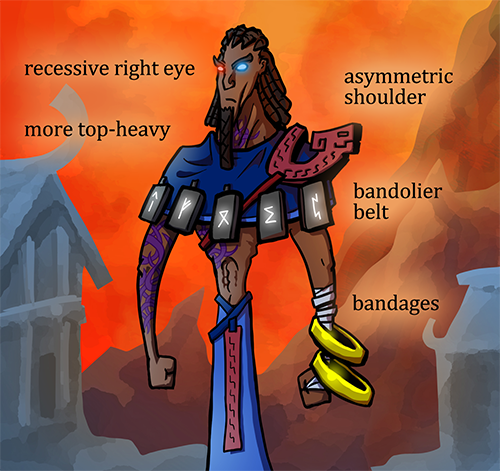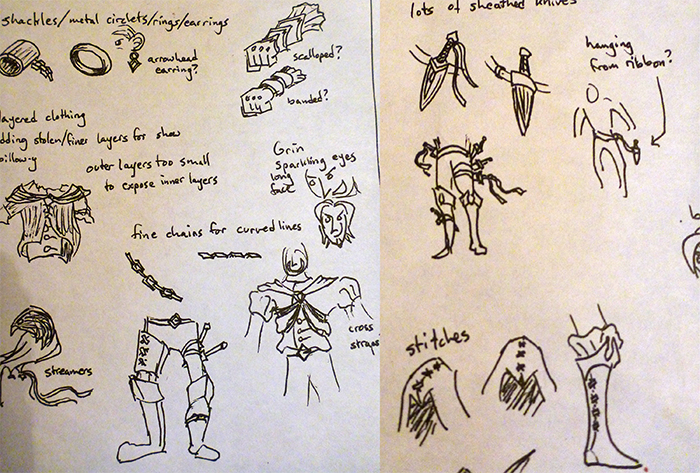As I write this, the Kickstarter campaign for Norsaga has almost wrapped up; all rewards have shipped, and the majority have made it to their destinations. Bringing this game to life and sharing it with over 1300 gamers across the world was an incredible experience. For anyone interested in the minutia of how Norsaga came to be over the last 6 months, or anyone thinking of Kickstarting their own idea, I'd like to share my lessons-learned.
Timeline
Norsaga's funding period on Kickstarter went from March 30 to April 28, 2015. Based on the manufacturer (Panda GM) and shipping method we chose, we expected:
- Fund collection and finalizing manufacturing contract: 1 month
- Pre-production: 1-2 months
- Mass production: 1.5-2 months
- Shipping: 2 weeks-1 month
Using the worst-case numbers, we then added 2 months and listed our expected delivery as December 2015. The pessimistic buffer was to counter our lack of experience; without it we would have been late. What ate up the extra time?
- Post-Kickstarter stuff: collecting money from Kickstarter takes ~2 weeks by itself. Finalizing the manufacturing quote after last-minute stretch goals took several back-and-forths, each almost a week. Paying the deposit via international wire transfer takes almost a week. One month gone.
- File proof: color space, PDF dimensions, typos, font cleanup and readability; we thought the images were ready to go during the campaign, and I had to redo their formatting at least twice. Then the manufacturer had to review the new files. This took ~2 weeks each time around. Then when we reviewed the PPC, we found a printer error that took another 2 weeks to proof. 2.5 months gone.
- Mass production: relatively uneventful, but a 1-week Chinese holiday knocked out a chunk of time. 1.5 months gone.
- Shipping: hoo boy. Due to the nature of the Chinese shipping company we were working with, we had to activate our account before they would pick up the games, and prepay the shipping before they would send them out. Reponse times to all questions were 1-2 business days due to time difference. Frequent website issues meant constant questions and cost more time. Lost over a week when our rep's email wasn't working and we couldn't talk to anyone. Waited almost 2 weeks on the wire transfer. 1.5 months gone before the first backers get their games.
Money
Kickstarter raises the money, and then you pay it to your manufacturer and shipper. Sounds simple. But sending money is neither free nor instantaneous, even online.
With Paypal, it takes 3-5 business days to transfer money into your account from your bank (I've heard you can sidestep this by hooking in a credit card). Paypal charges 3% for business transactions and another ~2-5% for currency conversion. Our shipper charged us 2.5% to convert any payment not in their currency. Our manufacturer didn't accept Paypal.
International wire transfers can't always be done electronically (our bank required you to stop in and sign the forms). Our bank charged $25 for each international transfer, and they took up to a week (or sometimes 2 weeks, as mentioned). Currency conversion fee was roughly 2.5% again.
For paying both the manufacturer and shipper, we needed to wait until we knew the amount before starting on the wire transfer. Usually by this time someone was ready to start work and was sitting around waiting for that payment.
We didn't budget directly for a lot of these conversion costs. Instead we built in a 10% margin. I think we should have built in more for our first Kickstarter, but keeping the funding goal low was more important.
Shipping
Despite all the issues that delayed our shipping, overall I was still very happy with SendFromChina, the company we used. There are a few other detailed posts that give an accurate impression of working with SFC; I heartily recommend reading these two. SFC definitely delivered on speed; once shipping finally commenced, backers were starting to receive their games within days.
We chose to have our games shipped in bubble mailers, with the game itself wrapped in foam. So far this has paid off and I've only heard 1-2 mentions of superficial box damage.
We shipped all games the same way, from China, with no tracking. I have yet to hear of anyone having customs troubles, although I have since learned from our Brazilian backers that the Brazilian customs process is rough, especially without tracking numbers. None of those copies have arrived yet; I'll update this post after they do.
In the future, what would we do different
- Try sending some files to the manufacturer for their preproduction team to look at early, in case they request format changes.
- Get invoice amounts and send payments as early as possible. When using Paypal, make sure funds are ready in advance.
- Have backup contacts in case of communication problems with company reps.
- Specific to SFC: activate account a month in advance, paying for only placeholder amounts (should cost a few US dollars at most). This way any troubleshooting with account activation happens early.
- Offer tracked shipping: our Brazilian backers told us that it's often easier to make sure games get through their customs office if the backer has a tracking number. Still waiting to see how this shakes out, but in the future I would look at offering tracked shipping for an additional cost during the campaign.
- A bit more advertising early in the campaign. We held off on paid advertising for the first few weeks; I'd like to see if there's a difference doing some from the start.
What I think we did right
- Picking a realistic delivery date. I've seen late Kickstarters generate negative sentiment among backers; getting everything shipped (even a little bit) early generated an amazingly positive response which was a delightful way for us to truly 'end' the campaign, months after the glow of achieved stretch goals had faded.
- Component stretch goals: a lot of the extra funding went into making the cards, box, tokens, etc all feel nice and sturdy. And people notice. Gameplay aside, they appreciate that extra quality. It's a great way to give back.
- Expansion stretch goals: I think (I may be wrong) that the Into the Myths stretch goal generated a lot of the late-campaign excitement which helped us so much. Showing off new artwork is always exciting. And it's a nice way to take concepts which aren't integral to the core game and still make them available.
- Communication: during and after the campaign, some people requested fewer updates, some more, so I think we hit close to the right number. Keeping people appraised of delays and how they affected the overall timeline was always met with favorable responses.
- Word of mouth: demoing Norsaga at Gen Con 2014 with completed artwork, being active on BoardGameGeek.com, sending copies to reviewers, talking to local game stores...we didn't generate huge buzz, but people we met tended to remember us and stay excited.
Hopefully this post helps some of you with planning and executing your own projects. We'll put these lessons to use in 2016 with a new project of our own.
Matthew

















